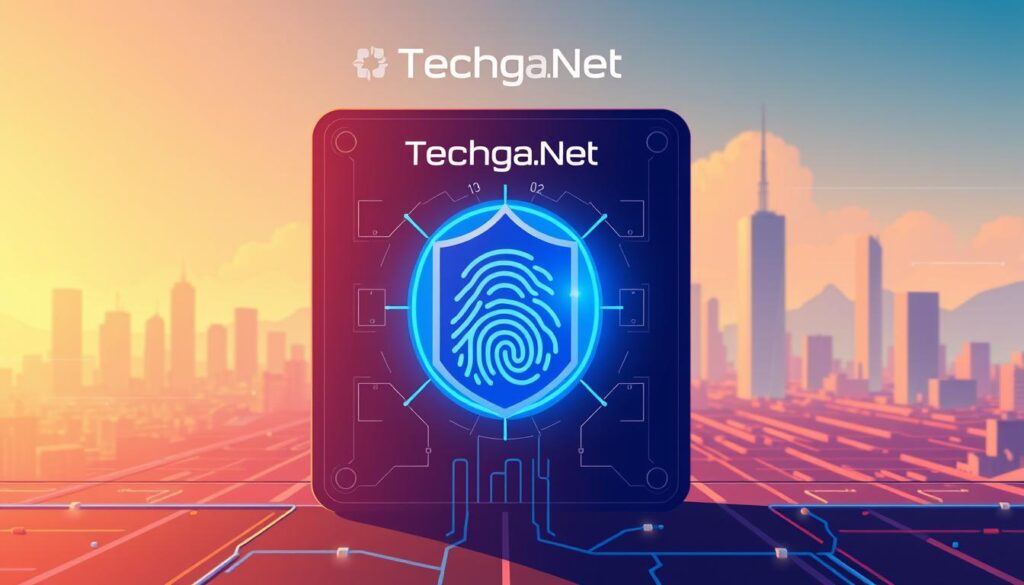In today’s digital economy, protecting sensitive information during financial exchanges is more critical than ever. With the rapid rise in digital payments, businesses and customers alike face growing risks from cyber threats. Ensuring the safety of every transaction is not just a priority—it’s a necessity.
Recent data shows that 80% of U.S. consumers now rely on digital payment methods, a trend accelerated by the COVID-19 pandemic. This shift has made systems more vulnerable to breaches, putting personal and financial data at risk. For businesses, maintaining trust with customers hinges on robust security practices.
Our guide will walk you through the best strategies to safeguard your payments. From secure platforms to advanced authentication methods, we’ll explore how to minimize risks and protect your information. Let’s dive into the essential steps to keep your transactions safe and secure.
Key Takeaways
- Digital payments are now the norm, with 80% of U.S. consumers adopting them post-COVID.
- Breaches can compromise sensitive data, making strong security practices essential.
- Businesses must prioritize trust by implementing advanced protection methods.
- Secure platforms and authentication tools are key to minimizing risks.
- Customers benefit from safer transactions when businesses adopt robust security measures.
Understanding the Importance of Digital Payment Security
The digital payment landscape has transformed dramatically since the COVID-19 pandemic. With more people relying on digital methods, ensuring the safety of these transactions has become a top priority. Let’s explore why this matters now more than ever.
Growth of Digital Payments Post-COVID
By the end of 2020, nearly 80% of U.S. consumers were using digital payment methods. This shift was driven by lockdowns and the need for contactless solutions. Businesses adapted quickly, but many overlooked the importance of robust security measures.
For example, only 40% of small businesses had adequate security policies in place post-pandemic. This gap left many vulnerable to attacks, highlighting the need for stronger safeguards.
Risks and Rewards in a Digital Economy
As digital payments surged, so did the risks. Cyberattacks increased by 31% between 2020 and 2021, with phishing scams and malware being the most common threats. These attacks often target sensitive information, putting both businesses and customers at risk.
However, implementing strong security measures brings significant rewards. For instance, two-factor authentication (2FA) can reduce the risk of account compromise by up to 99.9%. Businesses that prioritize security also build trust with their customers, leading to long-term loyalty.
“90% of consumers are concerned about online payment security, emphasizing the need for robust protection.”
| Risk | Solution |
|---|---|
| Phishing scams | Employee training and awareness |
| Malware attacks | Regular software updates |
| Weak passwords | Strong password policies |
By addressing these risks, businesses can create a safer environment for digital payments. This not only protects sensitive information but also enhances the overall customer experience.
Exploring Emerging Ecommerce Trends and Technologies for 2025
The future of ecommerce is evolving at an unprecedented pace, driven by innovative technologies and shifting consumer behaviors. By 2025, the industry will be shaped by advancements that enhance both convenience and security. Let’s dive into the key trends and technologies that will define the next era of digital commerce.

New Ecommerce Technologies on the Horizon
Blockchain integration is revolutionizing payment systems, offering enhanced transparency and reducing fraud risks. AI-driven fraud detection is becoming a cornerstone of secure transactions, while augmented reality (AR) is transforming how customers interact with products. For example, IKEA’s AR app allows users to visualize furniture in their homes before purchasing.
Digital wallets like Apple Pay and Google Pay are gaining traction, offering faster and more secure checkout experiences. Buy Now, Pay Later (BNPL) services, such as Klarna, are also reshaping consumer spending habits, making high-value purchases more accessible.
Impact of Pandemic on Ecommerce Development
The COVID-19 pandemic accelerated the adoption of digital payment methods, with 80% of U.S. consumers now relying on them. Businesses had to adapt quickly, but many struggled to implement robust security standards. This gap highlighted the need for stronger safeguards to protect sensitive information.
Post-pandemic, the rise of social commerce has been remarkable. Platforms like Instagram and TikTok are becoming major shopping hubs, offering features like shoppable posts and live-stream shopping. This trend is expected to grow, with social commerce projected to surpass $1 trillion by 2028.
Future Growth Projections and Challenges
By 2025, the ecommerce industry is expected to reach new heights, with global sales projected to grow by 39%. However, challenges like cybersecurity threats and compliance with privacy laws remain critical. Businesses must prioritize secure platforms and advanced authentication methods to build trust with customers.
Emerging markets in Asia, Latin America, and Africa present significant opportunities, driven by growing middle-class populations and increasing internet penetration. To succeed, businesses must adopt innovative solutions and stay ahead of evolving consumer expectations.
“The integration of AI and blockchain will redefine ecommerce, offering unparalleled security and personalization.”
For more insights on emerging ecommerce trends, explore how these technologies are shaping the future of online shopping. By embracing these advancements, businesses can create safer, more engaging experiences for their customers.
Implementing cybersecurity measures for online transactions
As digital payments dominate, safeguarding customer information is no longer optional. Businesses must adopt robust protocols to protect sensitive data and maintain trust. Let’s explore actionable steps to secure transactions and ensure compliance with industry standards.

Step-by-Step Guide to Secure Transactions
Securing digital payments involves multiple layers of protection. Start by implementing two-factor authentication (2FA). This adds an extra layer of security by requiring users to verify their identity through a second method, such as a text message or app notification.
Next, use tokenization to replace sensitive data with unique tokens. This reduces the risk of data breaches and simplifies compliance with regulations. For example, Comerica Bank uses tokenization to protect customer information during transactions.
Regularly update your software and systems. Outdated software is a common target for cyberattacks. Ensure your payment system is equipped with the latest security patches to minimize vulnerabilities.
Ensuring Compliance with PCI DSS and Standards
The Payment Card Industry Data Security Standard (PCI DSS) is a critical framework for businesses handling cardholder data. Compliance ensures your systems meet the highest security benchmarks. Here’s a breakdown of key requirements:
| Requirement | Action |
|---|---|
| Install Firewalls | Protect cardholder data with secure firewalls. |
| Encrypt Data | Use encryption for all data transmissions. |
| Regular Updates | Maintain secure systems with the latest patches. |
| Access Control | Restrict access to sensitive information. |
By following these steps, businesses can reduce the risk of fraud and build trust with customers. Compliance is not just a requirement—it’s a commitment to protecting your clients and your reputation.
Addressing Common Digital Payment Risks
Fraud schemes in digital payments are evolving, exposing vulnerabilities in current systems. Hackers are becoming more sophisticated, targeting sensitive information and exploiting weaknesses. To protect both businesses and customers, it’s crucial to understand these risks and take proactive steps.

Identifying Vulnerabilities and Fraud Schemes
One of the most common threats is phishing scams. Hackers trick users into sharing login credentials or payment details through fake emails or websites. For example, the Target breach in 2013 exposed millions of customers’ data due to a phishing attack on a third-party vendor.
Malware is another significant risk. It can infiltrate systems, steal sensitive information, or disrupt transactions. A recent study found that 70% of hacking attacks involve account takeovers, often facilitated by malware.
Weaknesses in payment systems, such as outdated software or insufficient authentication, also leave businesses vulnerable. For instance, 90% of digital payment systems lack proper recipient verification, increasing the risk of sending money to the wrong person.
Impact on Businesses and Customers
When breaches occur, the consequences are severe. Businesses face financial losses, legal penalties, and damage to their reputation. Customers may experience identity theft or unauthorized transactions, leading to a loss of trust.
For example, the Equifax breach in 2017 exposed the personal information of 147 million people. The company faced lawsuits and a significant drop in customer confidence.
Preventative Measures and Early Detection
To mitigate these risks, businesses should adopt robust security practices. Regular system updates, strong encryption, and employee training are essential. Implementing two-factor authentication (2FA) can reduce the risk of unauthorized access by up to 99.9%.
Continuous monitoring and risk assessment are also critical. By identifying vulnerabilities early, businesses can address them before hackers exploit them. For example, 80% of vendors fail to maintain PCI DSS compliance, leaving them open to attacks.
“90% of consumers are concerned about payment security, emphasizing the need for robust protection.”
By understanding these risks and taking proactive steps, businesses can create a safer environment for digital payments. This not only protects sensitive information but also builds trust with customers.
Leveraging Best Practices for Secure Online Transactions
Building a secure environment for digital transactions starts with empowering your team. Employee training and routine audits are essential to identify and address vulnerabilities before they become threats. Let’s explore how these practices can strengthen your security framework.
Employee Training and Awareness
Your team is the first line of defense against security threats. Regular training sessions help employees recognize phishing scams, malware, and other risks. For example, 95% of successful cyberattacks involve human error, making education a top priority.
Here are some actionable steps to enhance awareness:
- Conduct quarterly workshops on identifying suspicious emails and links.
- Encourage the use of strong passwords and two-factor authentication.
- Simulate phishing attacks to test and improve employee vigilance.
Routine Security Audits for Optimal Protection
Regular audits are critical to maintaining a secure payment system. These checks help identify gaps in your defenses, such as outdated software or misconfigured settings. For instance, 60% of organizations have outdated systems, leaving them vulnerable to attacks.
Key benefits of routine audits include:
- Identifying vulnerabilities before hackers exploit them.
- Ensuring compliance with industry standards like PCI DSS.
- Building trust with customers by demonstrating a commitment to security.
By combining employee training with regular audits, businesses can create a robust security culture. This not only protects sensitive datum but also enhances customer confidence in your payment processes.
Integrating Advanced Authentication and Encryption Techniques
The rise of digital fraud has made advanced authentication and encryption essential for businesses. As threats evolve, protecting sensitive datum requires innovative solutions that go beyond traditional methods. Let’s explore how these techniques can enhance security and build trust in digital payment systems.

Implementing Two-Factor and Biometric Solutions
Two-factor authentication (2FA) adds an extra layer of security by requiring users to verify their identity through a second method. This could be a text message, app notification, or biometric scan. For example, 90% of organizations that use 2FA report a significant reduction in unauthorized access.
Biometric solutions, such as fingerprint or facial recognition, are also gaining popularity. These methods are highly reliable, with a false acceptance rate of less than 1%. They ensure that only authorized users can access sensitive information.
The Role of Encryption in Secure Transactions
Encryption plays a critical role in protecting datum during transactions. SSL/TLS encryption ensures that information is securely transmitted between systems. For instance, 90% of organizations that use encryption experience fewer data breaches.
Tokenization is another effective method. It replaces sensitive card details with unique tokens, reducing the risk of data theft. This approach is widely used in modern payment systems to enhance security.
Best Practices for Advanced Security Measures
To implement these techniques effectively, businesses should follow these best practices:
- Use multi-factor authentication to add layers of security.
- Regularly update encryption protocols to stay ahead of threats.
- Train employees to recognize and respond to potential risks.
- Conduct routine audits to identify and address vulnerabilities.
“Combining multiple security layers results in stronger protection overall.”
By integrating advanced authentication and encryption techniques, businesses can create a safer environment for digital transactions. This not only protects sensitive datum but also builds trust with customers.
Navigating Third-Party and Endpoint Security Challenges
Third-party integrations and endpoint devices present unique security challenges in the digital payment ecosystem. While these components are essential for modern business operations, they often introduce vulnerabilities that hackers can exploit. To address these risks, businesses must adopt proactive strategies and leverage open standards like ISO 20022.

Managing Vendor Risks with Open Standards
Third-party vendors play a critical role in the payment process, but they can also be a weak link. The Target data breach in 2013 is a prime example. Hackers accessed sensitive customer information through a third-party vendor, compromising millions of records. To prevent such incidents, businesses should implement open standards like ISO 20022, which ensure secure data exchanges across systems.
Here’s how ISO 20022 enhances security:
- Standardizes data formats for seamless integration.
- Reduces errors and inconsistencies in transactions.
- Improves transparency and traceability across platforms.
Securing Endpoint Devices
Endpoint devices, such as smartphones and tablets, are often targeted by hackers. Android-based solutions, for instance, can incorporate encryption, secure boot, and regular updates to minimize risks. By segregating these devices from the core payment system, businesses can create an additional layer of protection.
| Risk | Solution |
|---|---|
| Outdated software | Regular updates and patches |
| Weak authentication | Multi-factor authentication |
| Unsecured devices | Endpoint segregation |
Strategies for Robust Security
To manage third-party and endpoint risks effectively, businesses should:
- Conduct thorough vendor assessments to ensure compliance with security standards.
- Implement continuous monitoring to detect and respond to threats in real time.
- Train employees to recognize and mitigate potential risks.
“Open standards like ISO 20022 are reshaping how businesses manage third-party and endpoint security.”
By adopting these practices, businesses can protect sensitive information and build trust with their customers. For more insights on enhancing your payment system, explore our expert eCommerce solutions.
Building Trust with Customers Through Transparent Security Protocols
Transparency in security practices is a cornerstone of customer trust in digital payments. When businesses openly share their protocols, customers feel more confident in their transactions. This trust is essential for fostering long-term loyalty and reducing uncertainty.
Clear communication about security measures reassures customers. For example, 70% of consumers are more likely to purchase from a business that explains its data protection practices. Sharing details on compliance, audits, and incident response builds a sense of shared responsibility.
Businesses should also report potential vulnerabilities openly. When Flagstar Bank faced a ransomware attack in 2020, their transparent communication helped maintain customer trust. Similarly, Danske Bank’s AI-driven fraud detection system improved fraud detection rates by 50%, showcasing the benefits of clear security practices.
“90% of consumers would stop doing business with a company after a breach if they felt the company wasn’t transparent.”
Here are some best practices for transparent security communication:
- Clearly define security protocols for customers.
- Share details on compliance with standards like PCI DSS.
- Regularly update customers on security audits and improvements.
- Address potential vulnerabilities proactively.
By adopting these practices, businesses can minimize customer uncertainty and build lasting trust. Transparent security communication is not just a best practice—it’s a necessity in today’s digital payment landscape.
Conclusion
Secure payment systems are the backbone of customer trust in modern commerce. Throughout this guide, we’ve explored essential strategies to protect sensitive datum and reduce risks. From advanced authentication methods to transparent security practices, these steps are vital for every business.
We’ve highlighted the importance of regular audits and clear communication with customers. These practices not only enhance security but also build long-term trust. By adopting these measures, businesses can stay ahead of emerging threats and ensure safer transactions.
As the digital landscape evolves, ongoing vigilance is crucial. We encourage you to implement these best practices and explore further resources to strengthen your payment system. Together, we can create a safer, more secure future for digital commerce.



